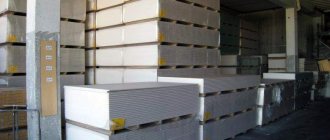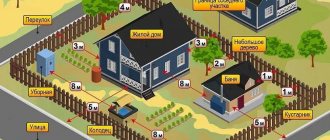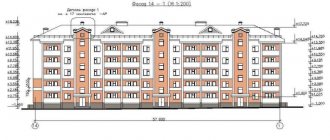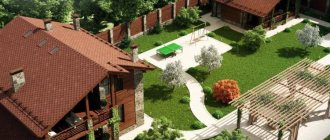The history of the concept of “1 hundred square meters”
In pre-revolutionary Russia, the concept of tithes was used to measure plots of land. After 1917 they were replaced by macaws. Thus, an ar is a square of 10x10 m with a total area of 100 m2.
The introduction of this value simplified the process of calculating the area of the site. The size of the plot was determined by the number of 10x10 m squares of which it consisted . Soon the archaic ar was supplanted by the easily usable sotka. Now it has become much easier to understand how many square meters in one hundred meters of land based on the definition itself: one hundred meters is one hundred meters.
There is another version of how the concept of weaving arose. Some believe that the term means a hundredth of a hectare: 1 hectare = 10,000 square meters. m / 100. In any case, hundred parts are still used today and are important in some aspects of land ownership.
Everyone knows the concept of 6 acres for agriculture. However, 6 acres is how many meters for a farm? In fact, this is 600 m2, which was allocated to a family of four during the period known in the history of the country as the planning period (1960-1970). This amount of land should have been enough to grow vegetables and fruits from 5 acres, and on the 6th acres it was planned to build a country house and outbuildings, no more than 2. This value is considered average in value today.
The concept of one hundred square meters has become so ingrained to denote the area of a plot, and it has become not only common among the people, but also enshrined in papers . For example, you can see an advertisement for the sale of a plot indicating 6 acres, not square meters.
Decoration options
First of all, the decorative elements must be in harmony with each other and correspond to a single style solution. To decorate the site, various types of ponds, decorative figures, vases and flowerpots are used. You can always come up with something original.
Almost no site is complete without a pond. It can have both an aesthetic meaning: to delight us with its beauty, and a purely utilitarian one - from there you can take water for irrigation. You can buy a pond ready-made or make it yourself
It is important to think in advance about the shape of the reservoir and the design of the surrounding area. In addition to the pond, you can arrange a fountain, river, or artificial waterfall on the site
You can throw an easy bridge over a pond or river.
Details will help to add zest to your garden: an unusually shaped flowerpot, a pot, decorated in the same style, an arch or a decorative gate. Now at any construction market you can easily find a variety of figurines for decorating your garden. These can be gnomes, various animals, other sculptures
It’s just important not to overdo it with the number of such figures.
Many gardeners use improvised materials to decorate their gardens - car tires, bottles, natural materials such as wood and pine cones. This design can look very interesting; in addition, it does not require material investments and allows you to use your creative potential.
Methods for calculating the dimensions of the land along the perimeter
So, 1 hundred square meters is 100 m. It is important for the land owner to understand the parameters of his plot and know the exact numbers in meters and hundred square meters. The area in acres is obtained by dividing the area indicated in meters by 100. To do this, you will need to measure the area. Let's figure out how to do it for different parameters of the land plot. The shape of the plot is not always classic rectangular, so we will consider options with different parameters of the plots.
By measuring the distances between the milestones and obtaining the area in meters, it is possible to determine its dimensions in acres.
A plot in the shape of a regular rectangle
To measure an area of the correct rectangular shape, do the following:
- drive pegs around the perimeter in the corners of the area;
- measure the distance between them (using a rope or a construction tape when the land is small);
- Calculate the area of a regular rectangle: to do this, multiply the length by the width.
Having received the amount in meters, you can easily convert the value into hundredths: divide the amount obtained by measurements by 100. This way you will get the dimensions in hundredths.
If necessary, distances can be measured in steps: 1 step = 0.7 m (for a person’s height 180 cm). Then the answer to the question “how much is one hundred square meters of land” will be a square with sides of 12-14 steps, which is what one hundred square meters is.
Another handy way to measure distances is a stick, the length of which will be 1 m. A tripod, a simple device of three sticks with a step of 1 m, will speed up the measurement process.
A quadrangle-shaped area with different lengths
To determine the area of a plot of land in the shape of a quadrangle with sides of different lengths, you should:
- Place pegs in each corner;
- measure diagonals;
- multiply the diagonals, divide the result by 2, multiply by the sine of one of the angles between the diagonals. Formula: S = ½(d1*d2)*sinα.
Plot of non-standard shape
The most important thing when taking measurements is to clearly mark the boundaries of the land plot. There are three ways to find out how many acres of land are in a plot of non-standard shape :
- using land surveying. This method is the simplest and at the same time the most accurate. When preparing documents (for example, for property), you should use it. It consists in the fact that the invited specialist determines the area of the allotment using a geodetic method. To do this, he uses a rangefinder, a level, a special tower and other tools. A measuring rod is installed on the boundary stone, and each edge of the area should be clearly visible. Measure the distance between the edges, so the area is visually divided into equal triangles. Then the area of each triangle and the total are calculated. In this way, areas that are very difficult to measure manually will be accurately calculated;
- independent measurement. This method involves installing poles, or pegs, at the corners of the perimeter, after which the distances between each of them are measured. Draw a diagram of the site on paper, divide the land into correct shapes. Then you need to calculate the area of each and add up all the amounts. These arithmetic calculations will give the desired result - the total number of acres. The method will not give accurate results, unlike the first option;
- using Google map. This method provides very rough data and is only suitable for getting a general idea of the site. Points are placed on the map in the corners of the perimeter, they connect and give the finished result.
A clear understanding of the parameters of your land plot will allow you to accurately plan your activities on it and understand how suitable it is for achieving your goals.
House on a plot of 4-5 acres: how to arrange garden objects
Small plots have advantages over larger areas: they are easier to maintain in a well-groomed condition, and they are better suited for creating cozy and landscaped areas and garden objects.
First, you need to zone the site and determine what objects you want to place on it. You should not try to place as many elements as possible in a small area - it is important not to overload the area, but to plan it as competently as possible. When placing other construction objects on the site, as well as large trees and shrubs, you need to take into account the dimensions and height of the house. It is better not to plant trees near the house that will grow large. It is also better to avoid large flower beds and large-scale flower beds, since they are unlikely to fit into the plan of a small plot. It is recommended to fill the corners of the site with functional objects and soften them by placing a playground, pond, pool or gazebo there.
Weaving and other units of area measurement
So, one hundred square meters of land is one hundred square meters. When we know how many acres of land are in meters, it would be nice to understand the relationship of other units of measurement.
Sotka – area 100 m2. The value is used for plots with small sizes. However, it is not entirely convenient to measure large surfaces in acres and acre. When the area is more than one hundred acres, the land is measured in hectares. "Hectare" - one hundred acres. In addition, cadastral authorities also require figures for the land area in hectares.
A square meter is 1/100 of a hundredth. One hundred square meters is 100 m2. A hectare is 10 acres. A square kilometer is 10,000 acres.
To convert the parameters of a plot of acres (for example, 7.5 acres) into square meters, 7.5x100 is required. This means that a plot of 7.5 acres is 750 m2.
- to determine the number of hectares of land measured in acres, you need to divide the available acres by 100;
- whereas to determine one hundred square meters per hectare, we multiply by 100 (1 hundred square meters = 0.01 hectares);
- to convert the area from hectares to square meters, divide their sum by 10,000;
- Convert meters to hundred meters by dividing the area by 100.
The dimensions of rooms and buildings are determined in meters. The area of the region is measured in square kilometers.
Despite the fact that division into hundreds is traditional for many countries of the world, this unit of measurement is usually called the are.
10 acres - in the unusual unit of measurement decaré and dunam, which is used in the countries of the Middle East. 16 acres - in Thai paradise. Approximately 40.5 acres - in an English acre.
Examples of house projects on 4-5 acres
For plots of 4-5 acres, designs of small houses are suitable. These can be either one-story or two-story buildings with a convenient layout and a wide variety of architectural forms. You should not limit yourself in choosing the style and architecture of the building, even if the house is planned to be very small. Construction companies offer a wide selection of house designs that can be freely located even on 4 acres.
Why do you need to know the size of land plots?
Having switched to a sedentary lifestyle, people began to measure their plots. To eliminate misunderstandings associated with subjective units of measurement, in 1791. in France, the National Assembly adopted uniform values displayed in the system of measures.
In what cases is it important to know the size of your plot in acres? Let's list some cases:
- when you are selling or buying a home;
- for landscape design;
- when dividing a plot;
- in case of land lease;
- during construction;
- in the process of territory planning;
- in agriculture.
The process of measuring land is called “surveying” and is performed by specialists with appropriate experience and tools.
Understanding the scale of your territory allows you to determine how to properly place buildings and structures on the site. At the same time, it is important to comply with the rules of SNiP, which stipulate standards for distances between buildings for fire safety purposes. Understanding how many meters are in 1 acre will allow you to competently plan and place buildings on the site.
For example, you have a plot of 6 classic acres. You are planning to build a house 8x10 m. Convert the area of the building into acres - it will be 0.8 acres. This leaves you with 5.2 acres, which you can use to build a garage, for example, a bathhouse or a greenhouse. Or you can plant a vegetable garden, the area of which is also measured in acres. Understanding how much 1 hectare is, you can calculate what and where should be placed on your land.
Now we are sure that the question “One hundred square meters of land is how many square meters?” will not take you by surprise and you will be able to make the necessary calculations.
House on 4-5 acres - how to draw up a project
When developing a site plan, we start primarily from the location of the house. Since a residential building is the main object on the site, its location is first determined. Before developing a project, it is also necessary to conduct a study of the topography and soil on the site: you need to find out the composition of the soil, groundwater level, climatic conditions, identify wetlands or heavily windy areas. It is most convenient to take into account the features of the site by obtaining a geodetic plan of the territory.
Having decided where it is best to locate a residential building, you can move on to planning utility and other buildings, recreation areas and garden facilities. It is better to make a garage in a small area attached to the house from the street side. With this arrangement, you don’t even have to make a separate entrance to the site, but just limit yourself to the entrance to the garage. When drawing up a house project, it is important to take into account the location and connection of engineering systems: water supply, sewerage, gas supply, electrical networks. It is necessary to clarify in advance which networks are accessible on the site.
Preliminary stage - planning
Before you start arranging your summer cottage, it is worth studying the recommendations of experts regarding the layout. This will allow you to use the area most rationally, avoiding the fact that everything will be located chaotically, inconveniently, and ugly.
The design of a summer cottage is based on the identification of characteristic zones
So, first of all, you need to familiarize yourself with the set of building codes and regulations (SNIP). From there you can glean useful information, for example, about the recommended distances between buildings, fences, and plantings. For example, experts advise placing the garage closer to the gate.
Main types of summer cottage layouts
Another important point is the type of soil: it affects what green spaces will take root in the summer cottage. When the soil is initially not sufficiently enriched with organic matter, most likely you will have to additionally fertilize it and import black soil. The side of the world where the site is located, the level of natural light are important, firstly, when choosing plants, and secondly, determining the location of buildings.
Site planning is a creative process, depending on the flight of fancy and your wishes, but you need to follow generally accepted standards to avoid common mistakes
It is imperative to provide for the arrangement of a drainage system, especially if the dacha plot is located in a lowland. It will drain excess water from the home and, as a result, the soil will not subsidence, it will be possible to avoid washing away the foundation of the building, and the entire landscape will remain in its original form.











